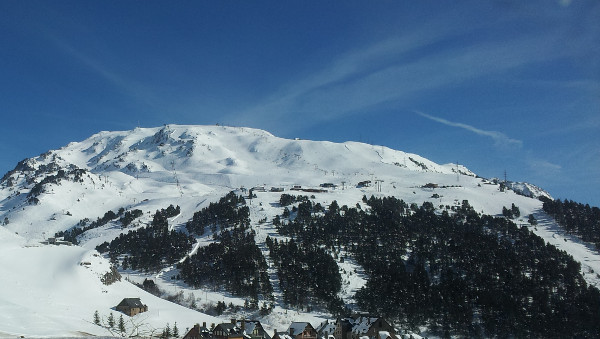All Round / All Mountain skis, also known as polyvalent skis. A few years ago, they had several qualities that often reminded us the Race models’ features. They showed smooth reactions and their shape fell in between the GS and the SL profiles. Nowadays those models are called “On Piste all rounders” and we’ve just talked about them a few lines above. In the last few seasons, a wider profile has been incorporated to them. Before that, their polyvalent behavior came from the different radius turns you could draw on the snow, but now you can also add the different types of terrain you can face, thanks to that widening that’s been made along ski. These are the All Mountain skis.

The Head iSupershape Titan is a very fun polyvalent ski.
© Head – HTM Sport GmbH
The On-Piste oriented models usually have profiles at around 70mm wide underfoot. On the other hand, the models with a more off-piste, all-snow conditions design can touch the 80mm under the foot without problems and even some of them unsuspiciously get close to the 90mm in their waist. Given enough length, they can become a very good pair of skis for everything we may have in mind (if our skiing skills allow us.) On groomed terrain, we will be able to unleash our need for speed, although the edge-to-edge transfer is not as fast as in the race models, due to their wider design. And out of the trails we will be afloat on the soft and deep powder with very little effort, and therefore we can always go one step beyond.
Some brands have large All-Round collections, quite on-piste focused. In their catalogues, they are clearly different from the wider, more polyvalent All Mountain ones. These models also incorporate a bigger rocker. We can distinguish this very easily by confronting both soles of the same ski. The ones that separate earlier are those with bigger rocker profiles.
To avoid mistakes when choosing between the two, we’ll go back to the usual questions. We must pay attention to the kind of terrain we like to ski and/or ask ourselves which is the one we spend more time in. Whatever our skills are, what follows will be useful for everyone.
Although we are very excited about skiing off-piste, if optimal conditions are poor in our favorite resort, it is not recommended choosing models beyond the 80mm mark under the foot. Not only we will feel good on groomed trails, but we’ll also enjoy the ride when those difficult, snow quality changing conditions may appear.
On the other hand, if we often ski in resorts where the snowfall is quite high and quality remains optimal for a few days, it is not only a good choice but advisable to go beyond that 80mm mark. Too narrow skis will leave us poorly suited, with less flotation, less maneuverability and therefore less reaction capability.

Everything you see is what a polyvalent ski must be ready for. It is quite a lot.
© SkiReviewer
Let’s not forget our ability as skiers, either. A skinnier ski will feel more precise and connected to the foot. It will also be easier to edge. A wider ski will feel very different, sometimes a bit dull compared to real On-Piste skis and a bit less easy to edge.
We should remember that despite their name, these skis do not specially shine at any feature, except for a few models with a hidden surprise. We cannot demand anything beyond a good behaviour and good manners in all terrains. Do never think wearing a pair of these allrounders allows you to face anything without a hassle. Despite this point, all modern multipurpose skis as the ones we are describing will suffice to comfortably tackle most situations we may find in the mountains. As an only pair, they are the ones for the vast majority of skiers.
SkiReviewer’s Buying Skis Guide
1.- Sailing the Ski’s Gear Ocean – An introduction to variety
2.- To Buy Skis or To Rent Skis? – How worth is to own your skiing gear
3.- All Types of Skis Quick Guide
4.- Types of Skis – Explained one by one
6.- The Skier’s Height and Weight – And some other important considerations
8.- The Ski Size Chart explained – Tips and ideas for choosing the right ski at first sight
